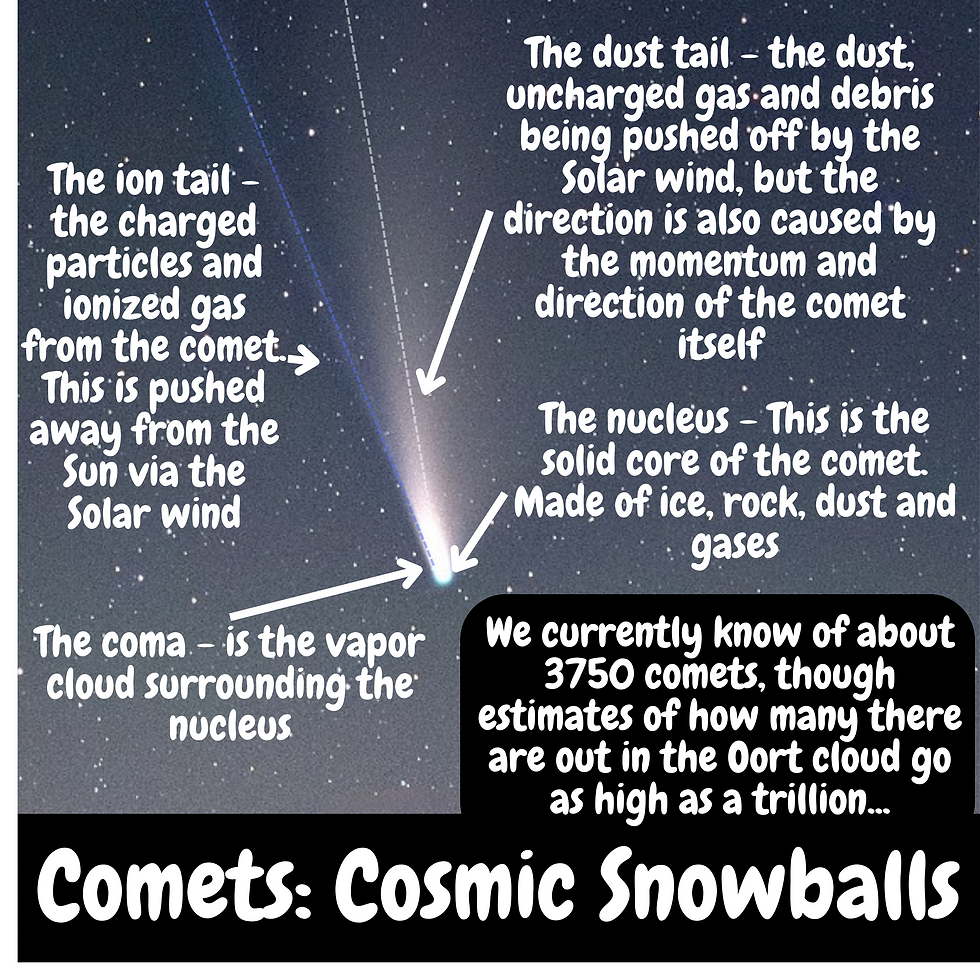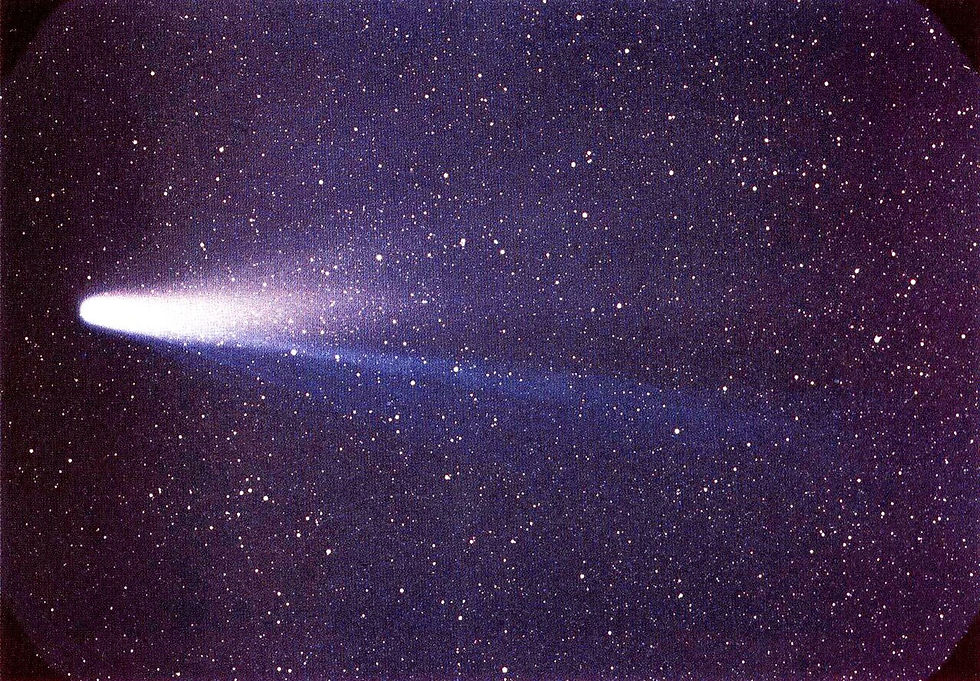Comets are beautiful, shooting across the night sky and streaking out these glorious beautiful tails behind them into the cosmos, but what truly are they? Well, let's delve into that a bit. Comets are the stuff of creation. Leftovers since the beginning of the Solar System approximately 4.5 billion years ago. Comets are icy, dirty chunks of material that did not make it into a planet or moon in our solar system. They are made up of ice, rocks, gasses and dust.

Part of what makes comets fascinating is their elliptical orbits which make them orbit the Sun in particularly eccentric and rapid fashion. They fly out from far away, slowly and being drawn in by the gravity of the Sun as they get closer and closer, they get faster and faster. Until they are at closest proximity to the Sun when they can reach speeds of up to 175,000 km/hr. This speed record was set by comet Borisov back in 2019 as it streaked round the Sun coming in from interstellar space.
For a teaching resource related to this topic, you might consider this research project template - available in both Google Suite Version and Offline Version as well.
Borisov was particularly unusual as until then it was thought comets come only from the Kuiper belt or the Oort cloud. However, since comets are very faint until they come into the Solar system and nearer the Sun, there may be many unexpected interstellar visitors we have never seen before coming in the future decades and centuries.
These elliptical orbits mean that comets have a long period of orbit and may take a very long time to complete an orbit, one of the more regular comets is Halley's comet. This is the most famous of all comets and has a regular 75-79 year orbit, it was last at Earth in 1986 and will return in 2061. Yet other comets can have much longer orbital periods into the hundreds and even thousands of years.

This is an image of Halley’s comet, this image was taken March 8, 1986 by W. Liller, Easter Island, part of the International Halley Watch (IHW) Large Scale Phenomena Network.
The current number of known comets is about 3750 or so. Yet, since they are small and distant from the Sun, all comets are faint until they head into the inner solar system. This makes finding and anticipating them particularly difficult, luckily most are too small to pose any serious threat to Earth or its inhabitants.
The two tails of a comet are truly incredible and they display their full majesty when they come near the Sun. The visible tail and the ionic tail show two different forms of matter being shed by the comet as it heats up and is being blasted by the solar wind. The ionic tail is less visible than the larger and brighter tail and is made up of charged particles and gas, while the visible tail is made of ice, dust and uncharged particles. This means that every time a comet comes near the Sun it is shedding mass and always leaves the Solar system to start another orbit slightly less massive than before.
Comets are truly the cosmic wanderers which inspire art, omens and scientific curiosity. They provide us with fascinating insight about the beginning of the Solar system and also a spectacular show when they come nearby. Let's all take a minute to appreciate the dirty snowballs of our universe and yet another aspect of the fascinating universe we live in.
Finally, if you would like a teaching resource that can help middle or high school students engage with this topic, then please consider this science article here or for all of the available astro teaching resources here.
Thanks for reading.
Cheers and stay curious
Oliver - The Teaching Astrophysicist

Comments